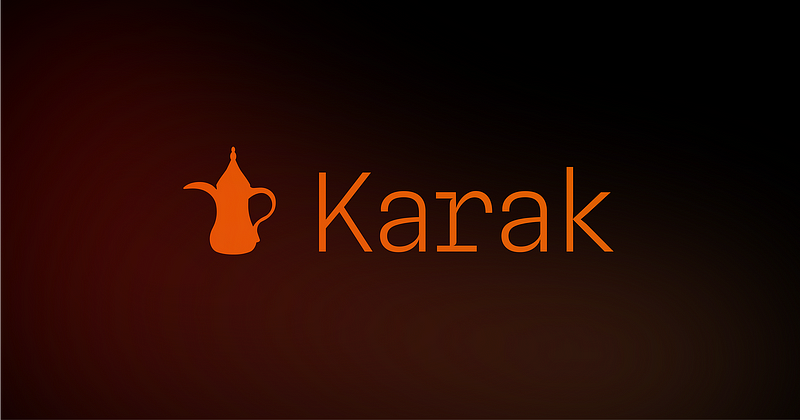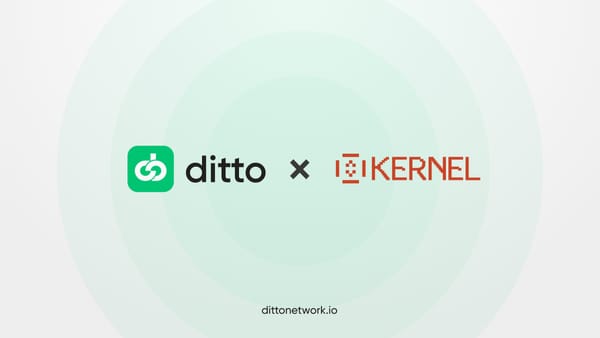Understanding Shared Security in Blockchain: EigenLayer, Symbiotic, and Karak
In the context of blockchain, shared security refers to the ability of smaller, less secure blockchains and blockchain-based protocols to…

As blockchain networks have evolved, they have become increasingly interconnected, creating new opportunities for collaboration and innovation. One of the most significant advancements resulting from this interconnectivity is the concept of shared security.
What is Shared Security?
In the context of blockchain, shared security refers to the ability of smaller, less secure blockchains and blockchain-based protocols to borrow security resources from a larger, more established one. This approach ensures that even smaller networks can maintain robust protection, enhancing the overall security and resilience of the blockchain ecosystem.
Shared security is particularly important in the decentralized world of blockchain, where the security of a network often depends on the number of participants (nodes) and the resources they contribute. Smaller blockchains, with fewer participants, are more vulnerable to attacks, such as the infamous 51% attack. By leveraging the security of a larger network, these smaller blockchains can significantly increase their defenses, making it much more difficult and costly for attackers to compromise them.
Shared security protocols such as Eigenlayer, Symbiotic, and Karak operate through the collaboration of three main entities: restakers, operators, and Actively Validated Services (AVSs).
The Key Benefits of Shared Security
Shared security offers several key benefits that make it an essential feature for the continued growth and stability of blockchain networks:
- Security for Smaller Protocols: Smaller blockchains are often at a higher risk of attacks due to their limited resources. Shared security allows them to tie their security to a larger, more established chain, drastically reducing the risk of successful attacks.
- Increased Scalability: Secure blockchains like Bitcoin and Ethereum often face scalability challenges. Shared security enables smaller blockchains to move transactions off the main chain while still benefiting from the enhanced security of the larger network. This approach helps increase overall network throughput and reduces congestion.
- Expanded Feature Sets: By leveraging the security of a larger network, new blockchains can focus on offering specialized features and optimizations without compromising security. This fosters innovation and allows for the development of more diverse and feature-rich blockchain applications.
- Simplified Validator Management: Projects leveraging shared security don’t need to form their own validator sets or attract individual validators. Instead, validators from the parent network (or restaking protocol) can execute work across multiple protocols simultaneously. This not only simplifies the operational overhead for new projects but also ensures that the security is backed by a robust and experienced set of validators, enhancing the overall security and efficiency of the network.
What is Restaking?
Restaking is a core concept within the shared security model. It involves the process of taking staked assets from one network and reusing them to secure additional networks or services. This allows for more efficient use of staked resources and enhances the overall security of multiple networks simultaneously.
In a restaking model, participants can stake their assets, such as Ethereum (ETH), and in return they get tokens like stETH, rETH etc. and then restake those assets to provide security and validation services to other blockchain protocols. This not only helps to secure the smaller networks but also provides additional incentives and rewards for the participants, making it an attractive option for both networks and stakers.
Ditto is an execution protocol that leverages shared security and if you are considering re-staking, you’ll be able to re-stake with Ditto more securely. Soon.
What is EigenLayer?
EigenLayer is a blockchain protocol that implements a shared security model, enabling smaller or less secure blockchains to leverage the robust security of the Ethereum network. At the heart of EigenLayer’s approach is the concept of re-staking. Users can stake their Ethereum (ETH) or liquid staked ETH tokens (like stETH, rETH, etc.) on the EigenLayer protocol, and these staked assets are then used to provide security and validation services to other blockchain protocols, known as “Actively Validated Services” (AVSs).

By allowing smaller blockchains to piggyback on Ethereum’s security, EigenLayer helps to mitigate risks and encourages the development of new blockchain technologies and services.
What is Symbiotic?
Symbiotic is a new player in the shared security space, emerging as a leader in enabling networks to derive economic security from a diverse set of collateralized assets. Symbiotic’s modular design supports the restaking of various ERC-20 tokens, including stETH, and gives developers complete control over the entire restaking process.

Symbiotic’s flexible restaking logic allows developers to choose their preferred collateral assets, validator nodes, rewards, and slashing systems, offering a highly customizable and scalable solution for securing blockchain networks. The protocol’s key components include:
- Multi-asset collateral: Symbiotic supports restaking from various networks, including ERC-20 compatible assets, LP tokens, and other digital assets.
- Vaults: Custom contracts that handle the delegation of collateral to operators across networks.
- Operators: Entities that manage infrastructure on behalf of networks.
- Resolvers: Contracts responsible for approving or rejecting slashing penalties incurred by operators on the networks where they provide services.
By providing a versatile and scalable network, Symbiotic empowers other networks to customize their restaking implementations, making it a powerful tool for enhancing security in the blockchain ecosystem.
Symbiotic enables cross-chain support for Ditto, increasing its efficiency by allowing the use of different collateral for security, including BTC in addition to ETH.
What is Karak Network?
Karak distinguishes itself from EigenLayer and Symbiotic by offering a more holistic approach to shared security. The protocol supports a wide range of assets, including those offered by EigenLayer, such as ETH and liquid staking tokens (LST), as well as LP tokens, stablecoins, WBTC, and StaFi’s liquid staking tokens (LRT).

Karak Network enables stakers to restake their coins and commit their assets to a Distributed Secure Service (DSS) on the Karak protocol. This service improves security while reducing operational costs, making it an attractive option for both stakers and networks. The key components of Karak include:
- Restakers: Participants who secure Ethereum and other networks in exchange for rewards.
- Distributed Secure Service (DSS): Utilizes restaked assets to enhance security while lowering operational costs.
- Chains: Chains or rollups that use the services provided by distributed secure services.
- Operators: Individuals or entities responsible for conducting validation for distributed secure services.
Karak’s focus on interoperability and capital efficiency across multiple ecosystems makes it a key player in the future of shared security. Its broad support for various digital assets and its innovative approach to staking and security ensure that it will continue to play a significant role in the blockchain landscape.
The Future of Shared Security
The decentralized nature of blockchain relies on a large number of participants in the network. The more nodes in the network, the more secure it becomes. However, smaller networks often face challenges in achieving the same level of security as larger, more established networks. Shared security addresses this challenge by allowing smaller networks to borrow security resources from larger ones, thereby enhancing their overall security.
Without shared security, the cost of attacking each smaller network or Actively Validated Service (AVS) individually would be much lower compared to attacking a network like Ethereum. However, with shared security, the combined resources of interconnected networks drastically increase the cost and difficulty of executing such attacks, providing a stronger security guarantee for all participating networks.
While shared security presents significant benefits, it also faces challenges:
- One such challenge is the current overabundance of Total Value Locked (TVL) in staking that isn’t fully needed at this point. This surplus means that shared security providers and AVSs will need to subsidize operators and restakers in the short and mid-term to make Annual Percentage Yields (APYs) competitive enough to attract participants. An example of addressing this challenge is the EigenLayer initiative, which plans to distribute 4% of their tokens to support this subsidy.
- Another critical challenge is the lack of live slashing mechanisms, which are essential to enforce security within the network. The absence of slashing reduces the effectiveness of deterrence against malicious actions. Therefore, implementing slashing as soon as possible is crucial to making networks more secure. However, making slashing effective is itself a complex challenge. One approach is to use a quorum system, where a majority decision determines slashing events, though this is difficult to manage. Alternatively, mathematical methods and zk proofs offer a more objective and secure way to handle slashing but also come with their own set of implementation challenges.
Protocols like EigenLayer, Symbiotic, and Karak are at the forefront of this innovation, each offering unique solutions to the challenges of shared security. As these protocols continue to evolve, they will play a crucial role in shaping the future of blockchain, ensuring that all networks, regardless of size, can benefit from robust and reliable security.
By leveraging shared security through EigenLayer, Symbiotic, and Karak, Ditto Network is unlocking new possibilities for automation, scalability, and economically guaranteed execution.
Whether you are a developer, a founder, or simply an interested user, Ditto Network has a product that can enhance your experience while navigating these evolving challenges.
About Ditto Network
Ditto Network is a trustless actively validated keeper network (AVS) that runs event-driven workflows with economic guarantees of execution, leveraging shared security. In addition, Ditto offers various intent-centric automation modules and SDKs for founders and developers, introducing the future of embedded finance solutions in Web3.
The team is comprised of experienced web3 developers and professionals with backgrounds and previous exits in web3 from McKinsey, Uniswap, Nil Foundation, TrustWallet, NEAR, 3Commas, and PE/VC.
Website | X | Discord | Book a Call to Integrate Ditto to Your Project




